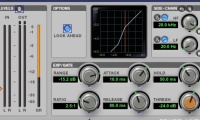How To Use An Expander To Efficiently Reduce Background Audio Noise
We'd all like to have a clean and clear audio in our video recordings. In reality, however, dealing with environmental noise is a part of virtually every production.
Most of the time, a small amount of noise in the background of your video can slip by unnoticed. As soon as that noise becomes audible, though, it can really distract your audience.
Although it's best to remove noise at the source, there are dedicated production tools that can help you to clean up a noisy recording. The tool that most people reach for is a ‘noise gate’, but these can quickly become destructive. Instead, you can use an expander to reduce the volume of the noise without completely removing it, which sounds more natural. In this tutorial you'll learn how to do just that.
Noise Reduction, Not Destruction
Just like in photography and video, the goal with audio noise treatment is not to eliminate noise. The aim is to reduce the noise until it stops being distracting, without introducing any negative artefacts or distortions to the original sound. Generally speaking, the best noise reduction is always the minimum amount you can get away with.
Use an expander when you have subtle background noise from recording on location (such as wind or distant traffic) or background noise from recording in a studio (such as A/C or exterior sounds). Expanders are also useful when producing voice overs and ADR.
Note that an expander isn't effective when the noise level is almost the same as the dialogue level. In this case, an expander could not differentiate between the voice and the noise. More destructive noise removal tools would be needed here.
Gates and expanders are very similar tools, and most dedicated audio and video processing applications combine the Gate with the Expander. As I said above, expanders create a more natural-sounding noise treatment. The parameters that you need to adjust to turn a Gate into an Expander depends on the software you use, which we'll cover below.

Noise Reduction Parameters: Recommended Settings
Ratio
By controlling this parameter you tell the gate to reduce the volume level by an amount relative to the sounds that are in the audio track. Sometimes the Ratio is called Amount, as in Sony Vegas.
A ratio below 20:1 will act like an expander, with ratios in the 2:1 region making a subtle downward expansion. For example, at 2:1, for every 1dB the level drops below the Threshold the expander will reduce it by a further 1dB (totaling 2dB, hence 2:1).
Range
Whereas Ratio sets a relative reduction ratio, the Range parameter sets an absolute reduction limit. By setting the range to -10dB, for example, you tell the expander/gate to never reduce the level by more than 10dB. This means the noise will be 10dB quieter than the dialogue.
Sometimes the Range is called Reduction, as in Final Cut Pro X.
Threshold
Threshold dictates the level at which the expander engages. Set this level so that dialogue is unaffected, but noise is reduced. For example, if the dialogue is averaging -18dB, set the threshold to -20dB (it's best to leave a few dB’s contingency).
Attack and Release
Attack and Release time dictate how quickly the expander takes to fully activate (or "open") and disengage (or "close"). For dialogue, I recommend 10 to 50ms Attack and a 12ms Release.
Hold
Hold dictates how long the gate stays open after the level drops below the Threshold. For dialogue, set this to 0 (or as low as it can go).
Software Examples
In Pro Tools, adjust the Range control.



Adobe Premier Pro has a built in Expander.



In Final Cut Pro X, you can use the built in Expander (under Effects > Audio).



Or you can use the noise gate and adjust the Reduction parameter.



Sony Vegas, Reaper and some other programs don’t come with an expander. Instead, install this free VST plugin, Floorfish.










